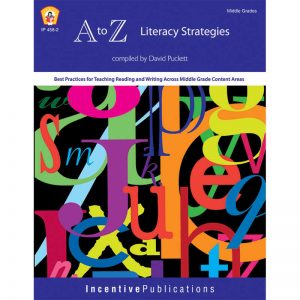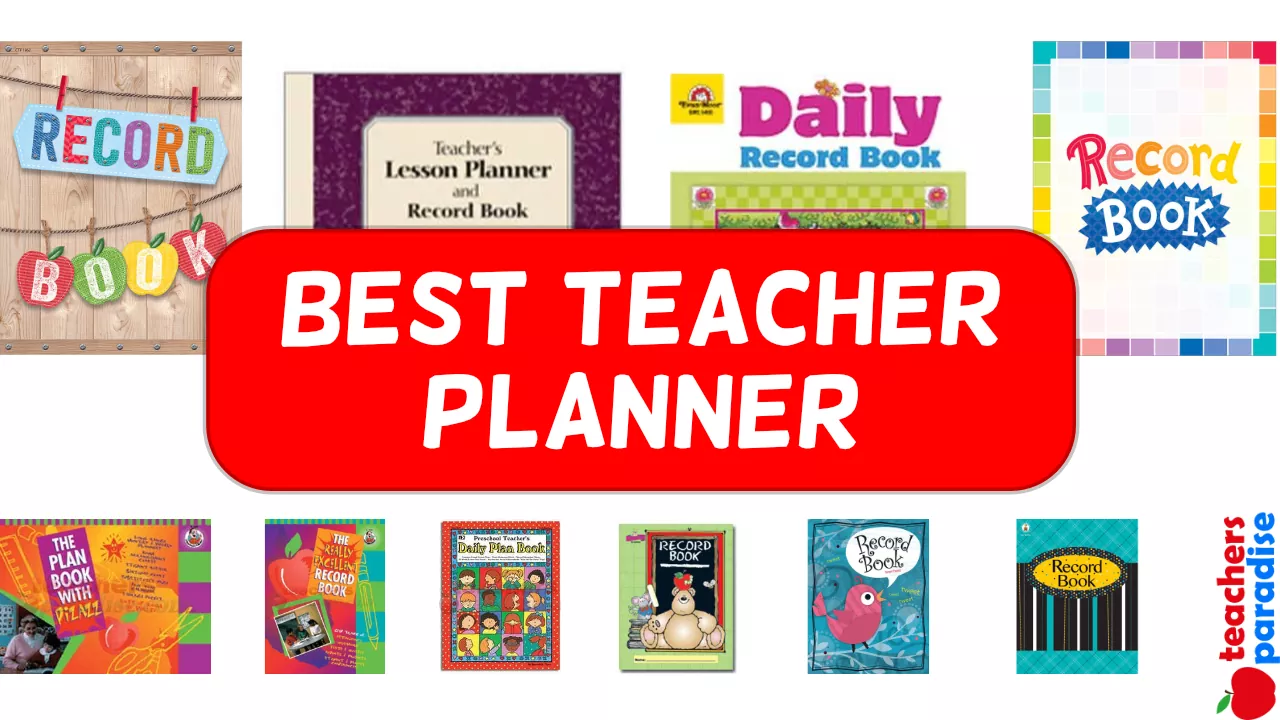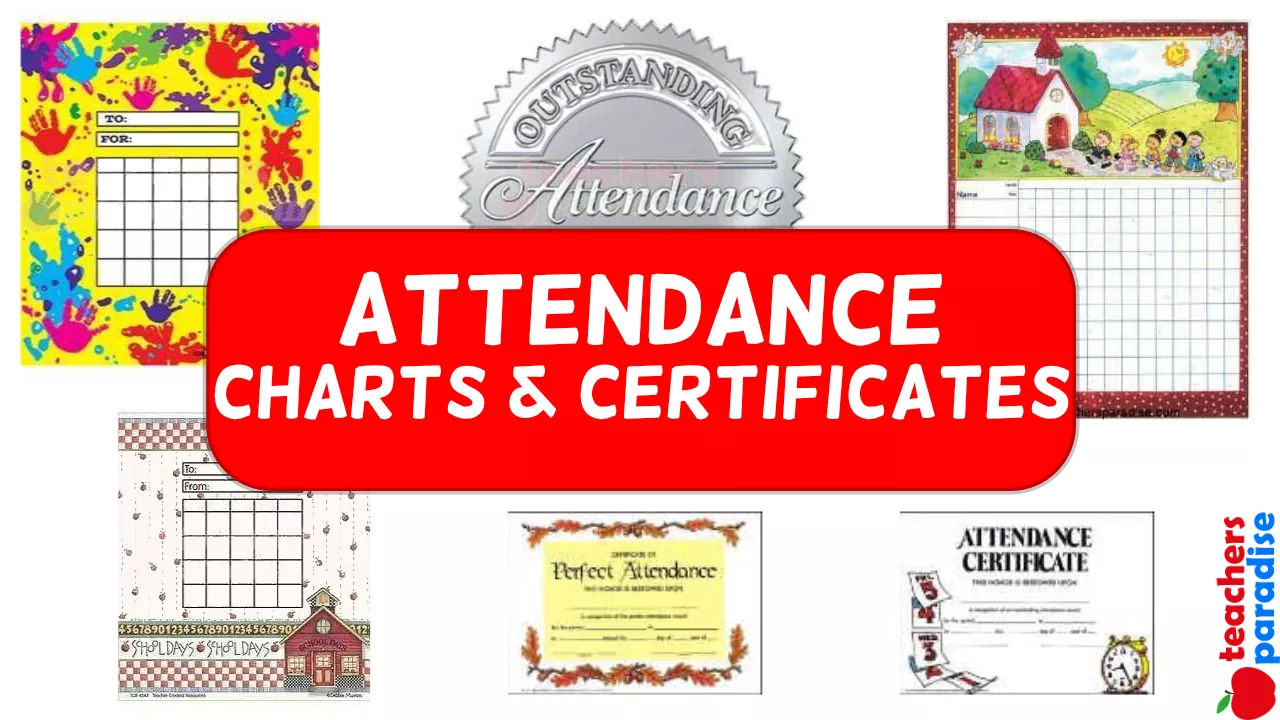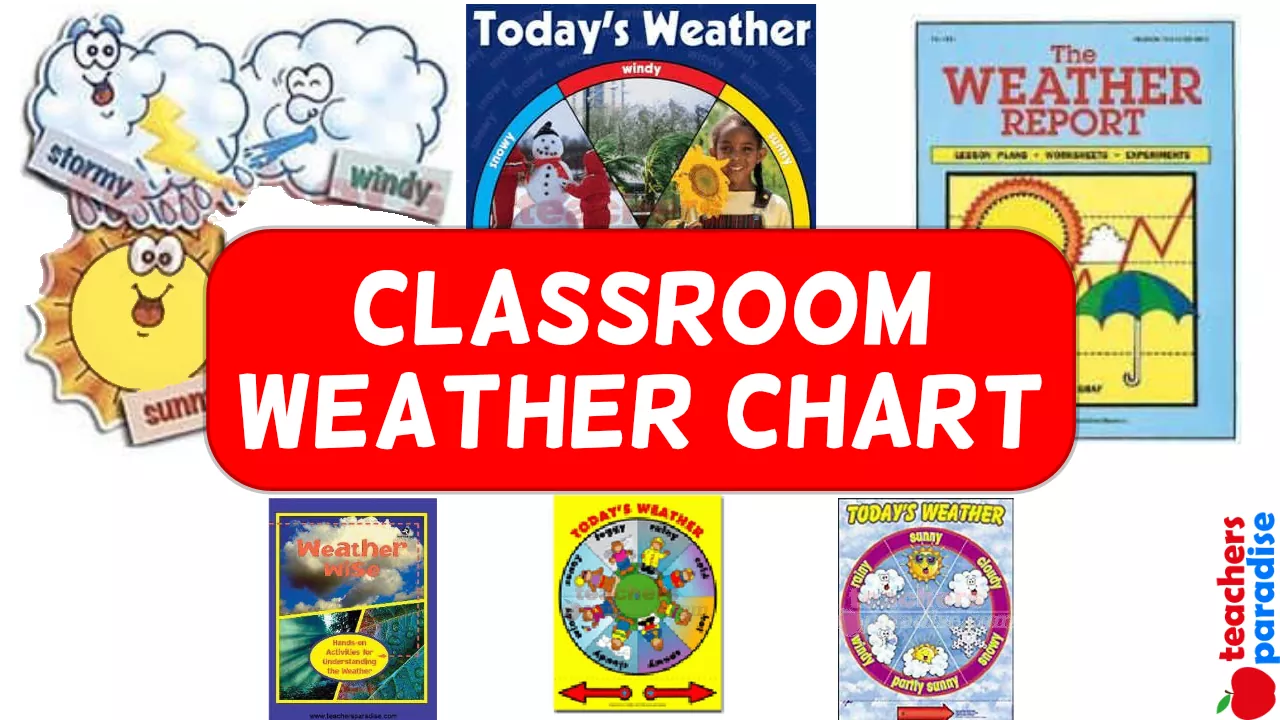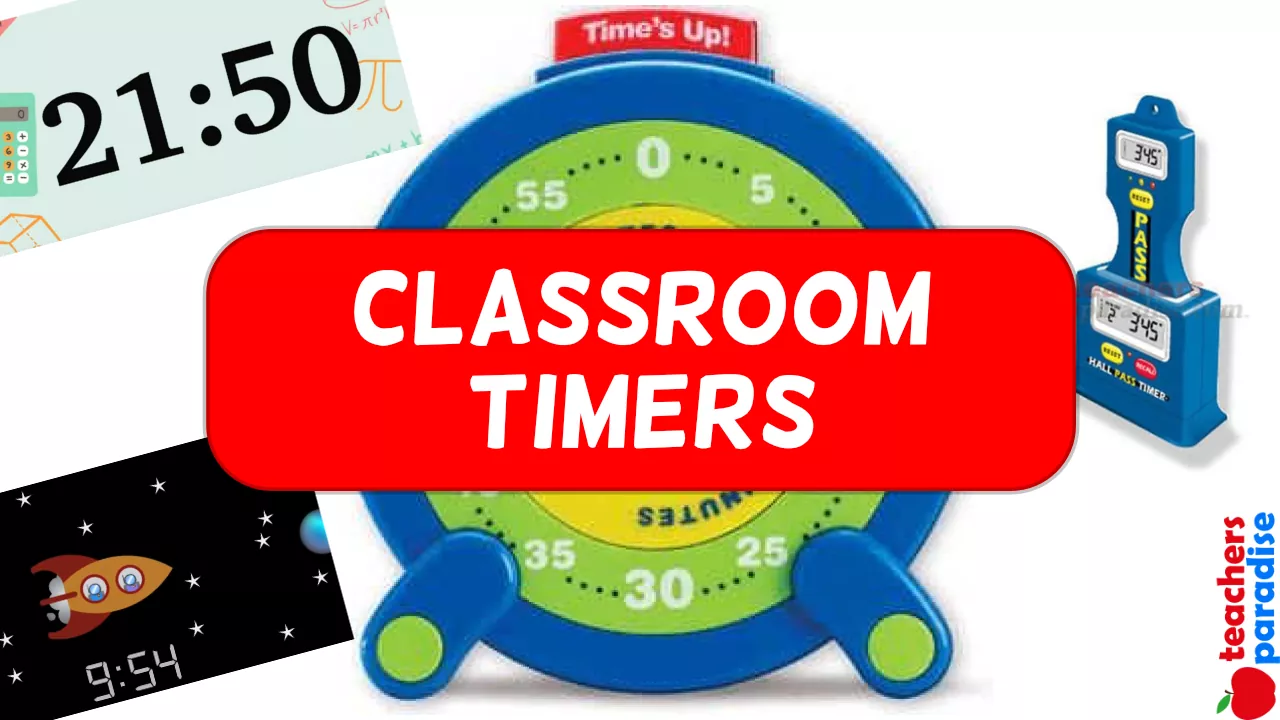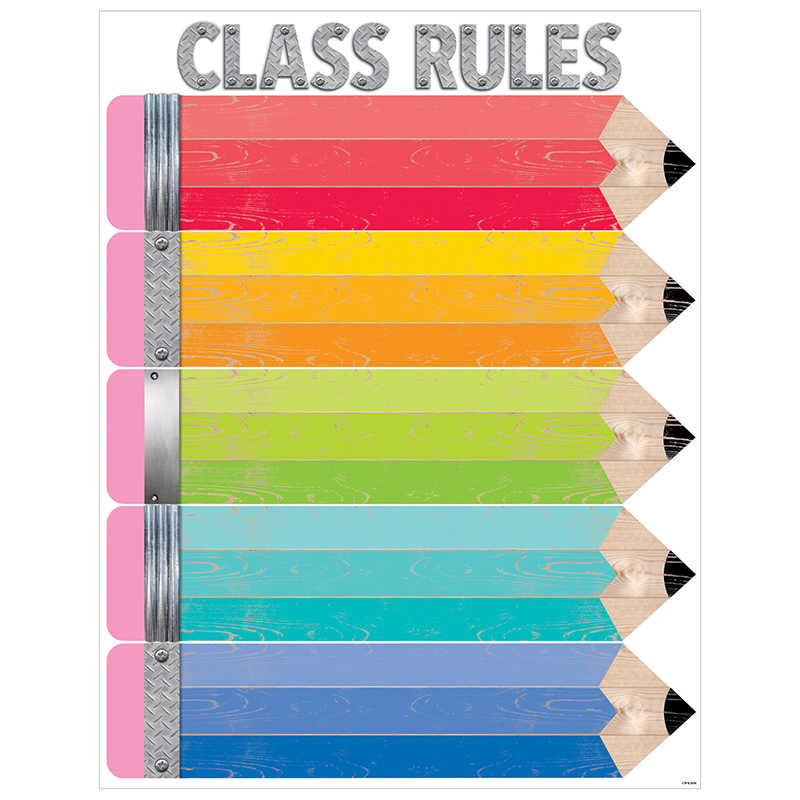SCHOOL STRUCTURES AND CLIMATE THAT MEET THE NEEDS OF MIDDLE GRADES STUDENTS
Overview of School Structures and Classroom Climate that Meet the Needs of Middle Grade Students
A school that meets the needs of Middle School Students:
• is based on the unique needs and characteristics of the young adolescent,including physical, psychological, intellectual, social, and moral and ethical needs.
• has a well developed mission statement that is understood and accepted by administrators, teachers, students, and parents.
• is structured around the widely varying needs and characteristics of young adolescents.
•is student-centered rather than subject-centered.
• includes provision for pre-service and in-service teacher training to meet the exceptionalities in interests, abilities, and experiences of students in transition.
• accepts and respects each student and teacher as an individual of worth and dignity in his or her own right; celebrates differences and encourages creativity and freedom of expression in keeping with ethnic genealogy and background experiences.
• requires the same teachers to share the same students over the same block of time in the same part of the building.
WORKSHEET & Sample PDF Activity
Sample PDF Activity
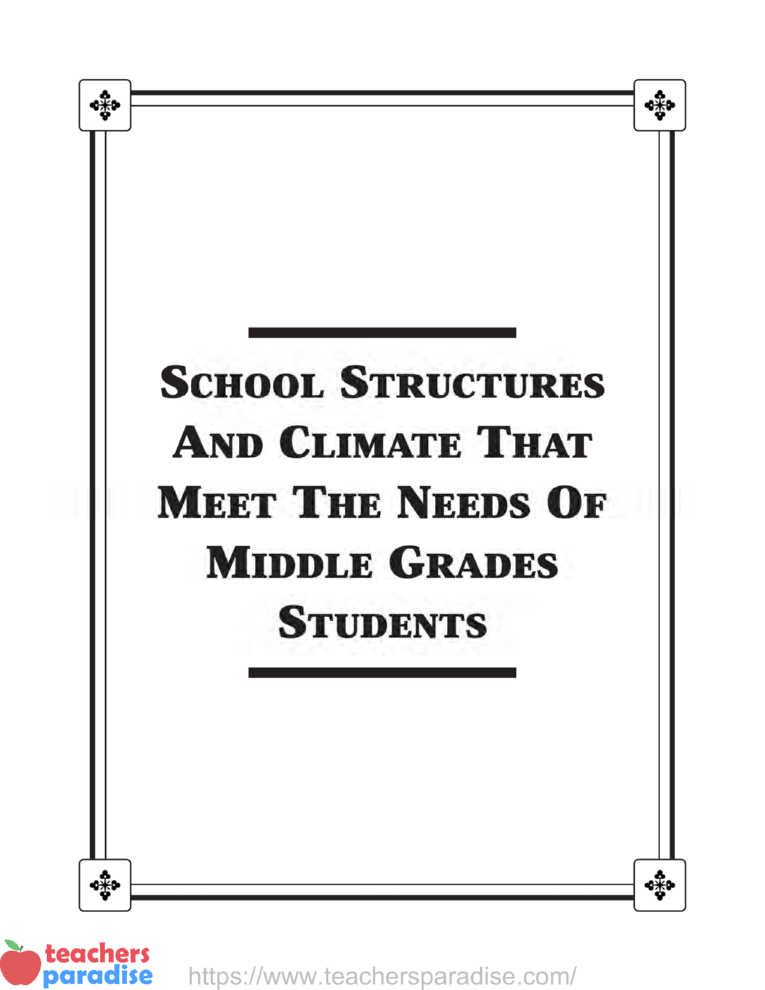
The effective middle school organizational structure affords:
• articulation between the elementary school and the middle school that is enhanced by increased communication and a student-centered focus. Articulation between the middle school and the high school is also an important aspect of the program.
• flexible block scheduling to allow for varied learning activities, grouping and regrouping students for instruction, and common planning time for teachers.
• interdisciplinary approaches in disciplines and integration of all curricular areas.
• a varied range of exploratory opportunities for students.
• opportunities for focusing on affective education as a regular part of the daily schedule.
• emphasis placed on intramural rather than interscholastic athletics with cooperation and participation encouraged.
• educators who have been especially trained and are committed to the education of the young adolescent.
• classroom teachers who have mastered strategies that promote positive classroom management and active student participation.
• forward thinking, outcome-based, and devotion to excellence in classroom instruction, student motivation, the quest for life skills, broad-based learning, and creative thinking.
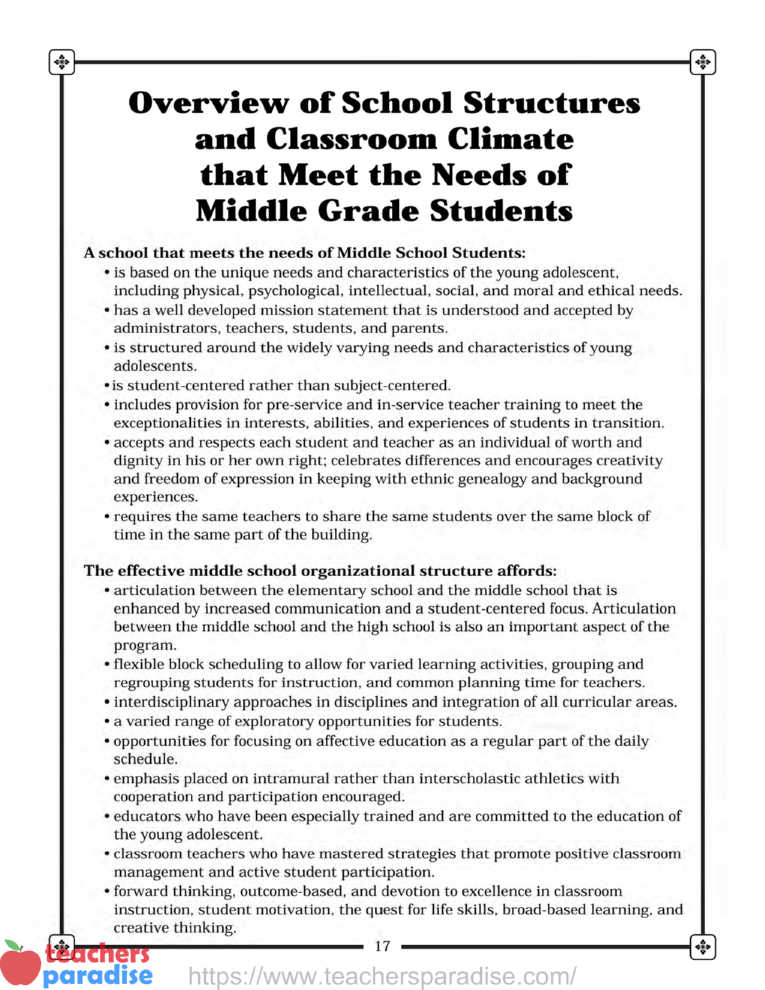
Table of Contents Incentive Publications IP1977
Overview
PREFACE – 13
SCHOOL STRUCTURES AND CLIMATE THAT MEET THE NEEDS OF MIDDLE GRADE STUDENTS – 15
INTERDISCIPLINARY TEAMING AND BLOCK SCHEDULING – 91
CURRICULUM AND INSTRUCTION – 165
ADVISORY AND AFFECTIVE EDUCATION – 243
STUDENT ASSESSMENT AND EVALUATION – 291
APPENDIX – 341
Table Of Contents
Preface – 13
SCHOOL STRUCTURES AND CLIMATE THAT MEET THE NEEDS OF MIDDLE GRADE STUDENTS
Overview of School Structures and Classroom Climate That Meet the Needs of Middle Grade Students – 17
10 plus 3 Guiding Questions for School Structures and Climate – 18
School Structure and Climate Terms That Meet the Needs of Middle Grade Students – 19
10 plus 3 School Structures that Meet the Needs of Middle Grade Students – 21
SO, You Think You Have A Good Middle School! – 22
10 plus 3 Major Distinctions Between The Middle School And The Junior High School – 28
10 Contributions To The Middle School From The Junior High School – 29
10 plus 30 Needs/Characteristics Of Young Adolescents – 30
10 plus 13 Indicators Of A Gifted / Talented Student – 32
10 Steps for Team/Site Based Implementation of Inclusion – 33
10 Characteristics Of An At-Risk Student And Ten Characteristics Of Schools That Meet Needs Of At-Risk Students – 34
10 Traits Of Young Adolescents To Keep In Mind When Planning Lessons And Activities – 35
10 plus 8 Characteristics of Underachievers – 36
10 plus 4 Questions for Teachers of Ethnic and Language Minority Students to Ask Themselves – 37
10 minus 1 Questions Concerning Instruction of Boys vs. Girls in the Classroom – 38
10 Important Needs Middle School Students Have While in School – 40
10 Points To Consider When Developing A School Mission Statement – 41
10 Suggestions For Facility Requirements For Middle Schools – 42
10 plus 3 Suggestions For Developing A Positive Middle School Climate – 43
10 minus 4 Tasks to Develop Understanding of Full Service Schools – 44
10 High-Priority Areas To Consider When Setting Up A Master Schedule – 45
10 minus 1 Things To Think About When Putting Together A Middle School’s Master Schedule – 46
10 plus 20 Rules to Consider for Establishing a Successful Middle Grades Setting – 47
10 Starter Statements To Assess Classroom Climate – 49
10 Ways to Maximize Space in a School Setting – 50
10 Creative Approaches To A Positive Classroom Climate – 51
10 Questions To Use To Assess Creativity In Your School – 52
10 Ways To Use Questions To Develop Higher-Level Thinking Skills – 53
10 minus 7 Important Decisions to Make for Effective Classroom Management – 54
Student Self-Assessment of Classroom Management Attitudes – 55
10 plus 13 Rewards to Consider for Good Behavior – 56
10 minus 3 Guidelines to Consider When Establishing a Set of Classroom Rules – 57
10 plus 28 Behavior Problems that Occur Most Often in the Classroom – 59
10 plus 2 Guidelines for Handling Inappropriate Behaviors – 62
10 minus 7 Approaches to Conflict Mediation – 63
Sample Information Gathering Form For Mediation Meeting – 65
Sample Behavior Contract – 66
10 Activities to Help Students Think Through and Classify Appropriate Behaviors – 67
10 minus 2 Ways to Head Off Potential Discipline Problems Before they Become Major Disruptions – 70
10 plus 8 Teaching Tips and Tidbits – 71
10 minus 2 Ways to Build A Good Parent Communication Program – 73
10 plus 3 Ways To Inform Parents And Caregivers And Involve Them In Their Middle Grader’s School Progress – 74
10 Steps For An Effective Parent Conference – 75
10 Things to Consider When Planning Student-Led Conferences – 76
10 plus 3 Things to Consider When Establishing Classroom Homework Policies – 78
10 plus 10 Things to Include in A Classroom Handbook – 80
10 minus 3 Measures for Gauging Benefits and Barriers for Family Involvement (Multiple Intelligences) – 81
10 plus 12 Teacher Planning Strategies for Classroom Success – 83
10 Findings from the Published Literature About Needs and Characteristics of Early Adolescence and Adolescent Programs – 84
Structures that Successfully Meet the Needs of Early Adolescents – 90
INTERDISCIPLINARY TEAMING AND BLOCK SCHEDULING
Interdisciplinary Teaming and Block Scheduling Overview – 93
10 plus 6 Important Questions To Find Answers For Related to Interdisciplinary Teaming and Block Scheduling – 94
10 plus 7 Terms Important to Interdisciplinary Teaming and Block Scheduling – 95
10 plus 4 Things To Remember When Developing Teams – 97
10 Questions To Ask When Forming Teams – 98
10 Possible Team Member Traits To Consider – 99
10 plus 15 Criteria To Determine How Well You Would Fit Into The Teaming Concept – 101
10 Ways To Rate Yourself As An Effective Team Builder – 103
10 plus 4 Roles And Responsibilities Of A Team Leader – 104
10 Things to Consider When Selecting A Team Leader – 105
10 minus 1 Responsibilities for Team Members – 107
10 plus 1 Things On Which Team Members Should Agree – 108
10 plus 2 Causes of Team Failure – 109
10 plus 20 Tools For Building A Team Identity – 110
10 Things That Great Teams Do – 111
10 More Things That Great Teams Do – 112
10 Barriers For Effective Teams To Overcome – 113
10 Ideas For Developing A Team Handbook – 115

